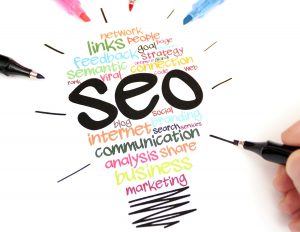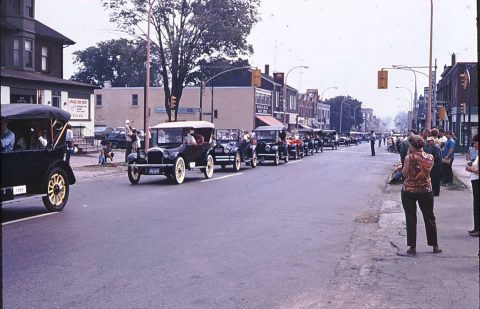During the months of July and August, the RMG’s Communications + Digital Engagement team hosted two students from Ontario Tech University’s Community Pathways Practicum Program. Each student explored an area of digital accessibility and presented their findings to the RMG team. Today, we hear from Harneak Burmi about the pros and cons of Artificial Intelligence vs manual alt-text for enhancing Search Engine Optimization (SEO) and web accessibility.
AI vs Manual Alternative Text: Enhancing SEO & Accessibility for Art Institutions
In 2019, Brooklyn resident Deshawn Dawson filed 37 civil lawsuits against various New York art galleries. These art galleries were in violation of the American Disabilities Act (ADA) because their digitized artworks did not accommodate the needs of persons with physical disabilities. Other residents had filed similar lawsuits, making up a grand total of 100 lawsuits filed against the state of New York. The residents’ biggest concern was the absence of alternative text in the galleries’ digitized artwork[i].
According to the Website Content Accessibility Guidelines (WCAG) 2.0, alternative text (alt-text) is defined as, “non-text content that is presented to the user as a text alternative that serves the equivalent purpose.” Alt-texts are image descriptions that provide the user with relevant context of the image by touching upon an individual’s senses and evoking realistic visualizations. Manually written alt-text can act as a good replacement to the image’s default description.
For example, the University of North Carolina at Charlotte discovered the importance of using descriptive alt-text to promote their virtual art exhibition. The university formatted their entire website by manually writing alt-text for all their digitized artwork. They focused on formatting image descriptions so that the alt-text reflected the interests of their target audience. This information was extremely beneficial for viewers who were visually impaired as their electronic screen readers were able to describe the context of an image by reading out its alt-text. By restructuring the alt-text for their images, the university was able to create a more inclusive virtual environment and enhance user experience[ii].
Another advantage of having descriptive alt-text is that it can increase search engine optimization (SEO). There are multiple techniques that work in unison to produce optimal search engine results, based on the usefulness of website content. SEO ranking methods are not incompatible with web accessibility practices – both can work simultaneously and compliment each other.

For example, search engine crawlers are unable to determine the context of an image simply by visually scanning it. Instead, they rely on the image’s alt-text description to determine what is being presented in the image and where the webpage should be ranked in comparison to webpages on other websites that display similar content. As mentioned by Google’s image publishing guidelines, having manually written alt-text that enhances user accessibility can also achieve higher search engine rankings[iii].
Albert Einstein once said, “the measure of intelligence is the ability to change.” Over the span of a few decades, humanity has armed itself with the most complex system of intelligence to date: artificial intelligence (AI). The breakthroughs in AI have increased the rate of productivity for many online businesses. Advancements such as object and person recognition software, machine and language translation, and automatic image colourization have made us reliant on these innovative technologies. Although, when it comes to sharing digital media content to improve both user experience and search engine rankings, relying on AI can be futile.
Thomas Smith, the CEO of Gado Images, mentioned that the inability to add meaningful and unbiased alt-text to digitized images is an inherent weakness of AI technology[iv]. For example, image prominent presentation software, such as Microsoft PowerPoint, are unable to integrate emotional connections that capture a person’s or an object’s relevance, expressions, and reactions in the alt-text description. Vague descriptions, like “A picture containing person, outdoor, grass,” are commonly written by AI machines upon examining an image. Such descriptions do not discuss the shapes, textures, colours, sounds and other elements that visually unimpaired individuals can see.
As a consequence, users who rely on assistive technologies, such as screen readers, are unable to create a full and accurate mental depiction of an image based on the AI alt-text. Additionally, search engine crawlers, which rely on alt-text to determine the purpose of an image and its target audience, will have trouble categorizing the webpage appropriately due to the lack of specificity in the description.
An inaccurate and unreliable automated alt-text description is just as ineffective as having no alt-text description at all. Therefore, creating manual alt-text seems like the better way to go. However, even manual alt-text has its flaws. Depending on the knowledge and expertise an individual who is writing the alt-text has, the possibility of writing a biased description is not entirely eliminated.
Unlike AI technology, humans have the capability of educating themselves on the specific contents of an image and rewriting alt-text descriptions that may be biased. In a rapidly transforming world, the human brain has evolved to become quite malleable and adaptive to the changes and pressures that exist when learning new ideas and applying those ideas in a practical sense, more so than current AI technologies.
Manual alt-text currently supersedes AI alt-text in its accuracy and reliability. Nonetheless, efforts by some organizations, like “ Cloudsight,” have been to use a hybrid approach by combining human intellect and AI machines to create more accurate alt-text descriptions. Writing human based alt-text has turned into a lucrative business as companies like “Scribely” offer alt-text services to various brands, photographers, and artists. Scribely has specialized writers who work to improve accessibility benefits for all users and search engine rankings for many websites.
For art institutions, having a digital marketing team that is educated on both web accessibility and SEO can increase the return on investment in the long run by optimizing the perceptibility of art works for individuals who deal with visual impairments, yet still have a profound infatuation for visual art. The McMichael Canadian Art Collection is a prime example of how adding descriptive alt-text to digital art works can boost user experience for both visually impaired and unimpaired users.
Embracing the future of AI seems inevitable, but it is also a reminder for organizations not to be complacent and continue to have a hand in deciding what AI can do well and what tasks simply require more human connection and intervention.
by Harneak Burmi
[i] Watlington, Emily. “How Museums Are Making Artworks Accessible to Blind People Online.” ARTnews.com, ARTnews.com, 22 Dec. 2020, www.artnews.com/art-in-america/features/the-met-mca-chicago-blind-access-alt-text-park-mcarthur-shannon-finnegan-1202677577/.
[ii] Sorrell, Melanie, et al. “Creating an Online Scientific Art Exhibit Formatted for People with a Visual Impairment.” Journal of Web Librarianship, vol. 11, no. 2, Routledge, 2017, pp. 105–23, doi:10.1080/19322909.2017.1300788.
[iii] “Google Images Best Practices.” Google Images SEO Best Practices | Search Central | Google Developers, Google, 2021, developers.google.com/search/docs/advanced/guidelines/google-images?hl=en&visit_id=637612992999017808-606899786&rd=1.
[iv] Smith, Thomas. “AI Is Terrible at Writing Alt Text.” Medium, OneZero, 5 July 2021, onezero.medium.com/ai-is-terrible-at-writing-alt-text-e79b0c4ecf51.

